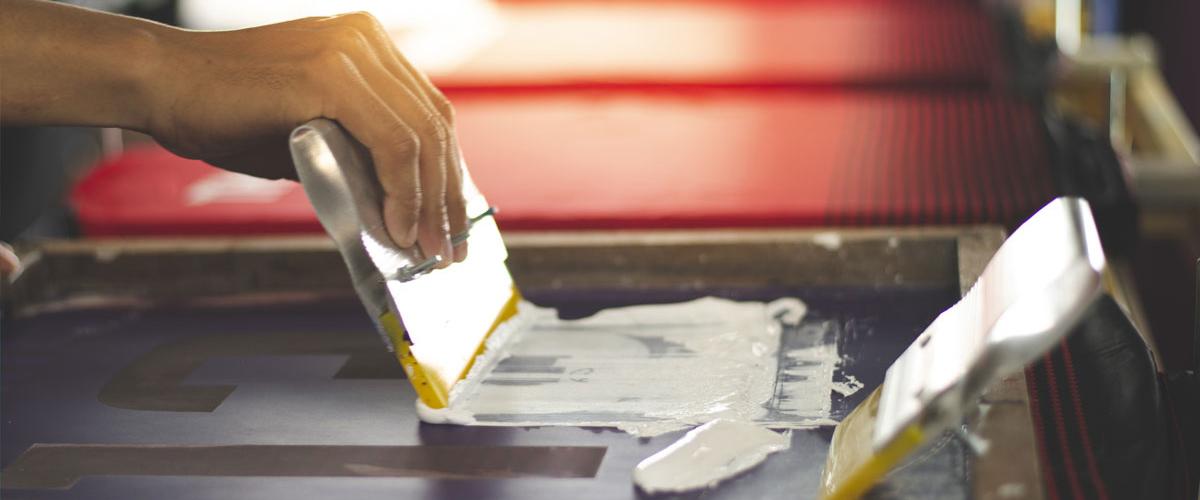13 Mar Technology of printing

The textile printing can be defined as the decoration of a fabric by a repeating pattern.
From a technical point of view, it is the reproduction of a decoration by applying a tool loaded with colouring matter onto a textile support.
There are different artisanal and industrial printing techniques for the fabrics, in particular:
- Batik: a technique originating in Java consisting in masking with the wax the un-dyed parts of the fabric
- Flocking: technique consisting of gluing the pattern and Sprinkle it with short textile fibres for a velvety look
- Printing on the board: a crafting process consisting of carving the pattern in a board which is then applied to the fabric
Flex Print
Flex printing technology is one of the most sophisticated printing processes. Due to the large number and the wide variety of colours, it is possible to achieve many effects with this technique. The printing is only very discreet in relation to the textile. It is smooth and slightly shiny. This flex printing technique is particularly recommended for texts and patterns without colour degradation. It is possible to print up to three different colours per pattern.
Flocking
Flocking is also one of the most sophisticated printing techniques due to high-quality, resistant printing results. The process is the same as for flex printing. The obvious difference lies in the final result. The flocked surface is slightly raised, reminiscent of velvet. It reminds one of the thin surface of a plush. The flocking is perfectly adapted to patterns without colour degradation, texts, and logos. It is possible to print up to three different colours per pattern.
Silkscreen printing
Modern screen printing has almost nothing like the original technique of silk-screen printing. Screen printing, as is known, is used in many areas of human activity. This method of image reproduction is not a prerogative of the printing industry, it is widely distributed in various industries. One of its main applications is the use in textile and clothing industry for the drawing of images on cloth. This area is the use of screen printing is not simply one of the most important, it is – its cradle.
Direct digital printing
Direct digital printing is ideal for printing multi-coloured photos or patterns, and with colour gradations. Whether the textile is dark or light, whether the pattern is complex or simple, direct digital printing will reproduce every detail. Even your photos or graphic images (eg, for personalised gifts, company logos, etc.) can be printed on a textile using this high-quality technique.
Sublimation printing
Thanks to the use of special inks, the patterns are sprayed into the textile. It is thus possible to produce an impression that is almost “invisible”. This dye sublimation printing technique can also be used on mugs, and any other accessory. For these products, the colours will not be vaporised, but transferred at high temperature under the effect of pressure. With this technique, all colours are printable. It is therefore ideal for patterns with more than three colours and a colour gradation.
